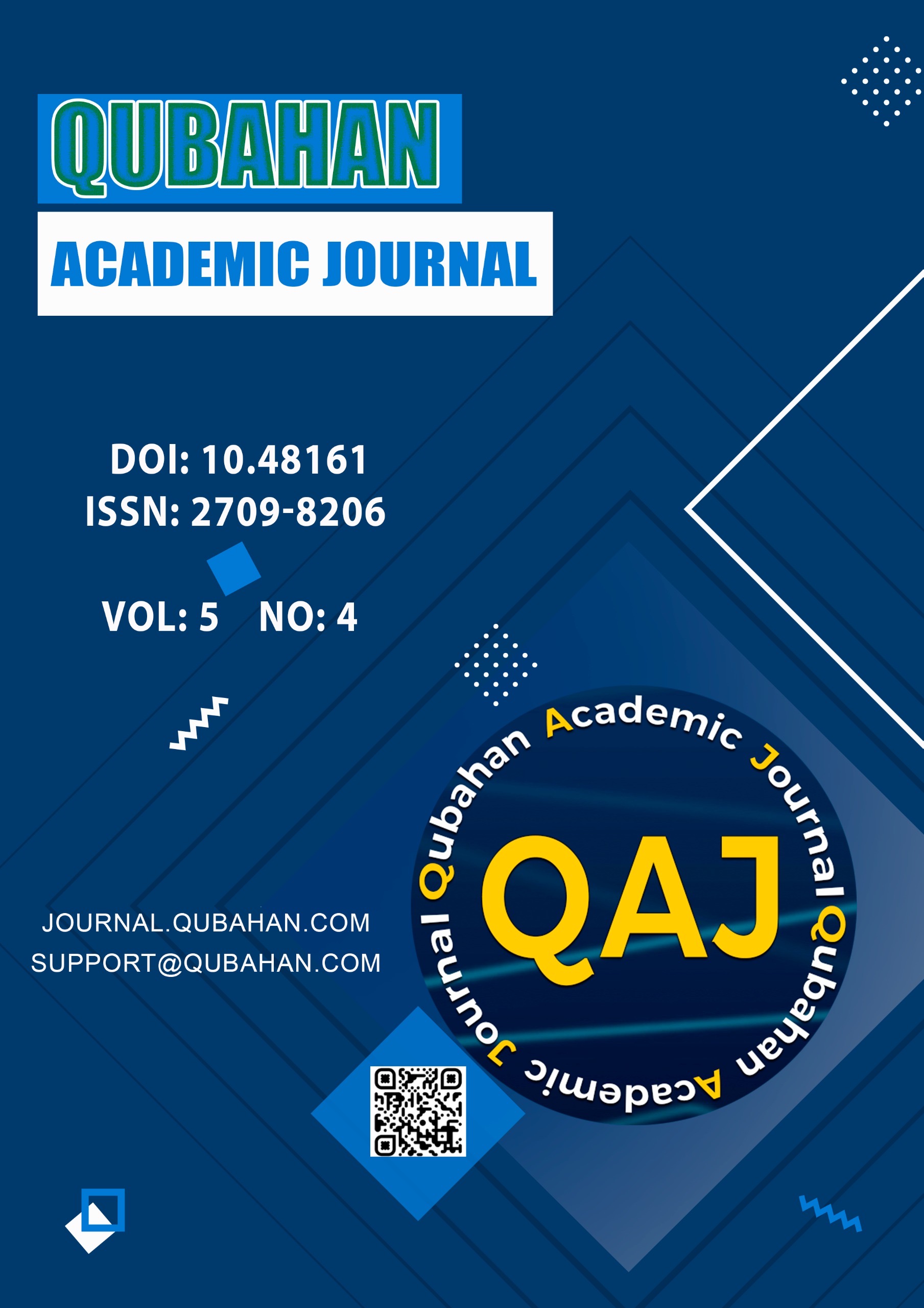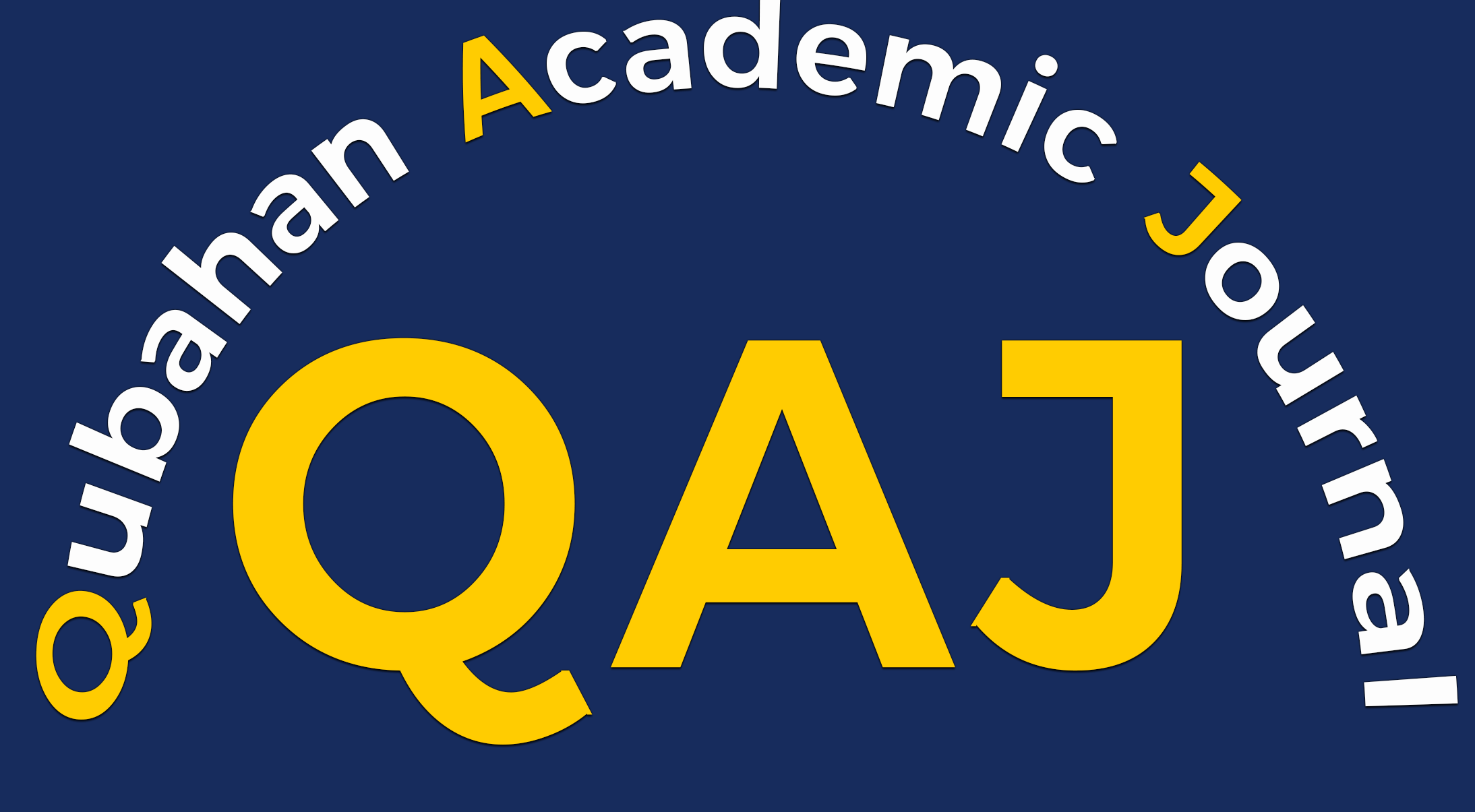Gamification of the Google Classroom Educational Platform as a Tool for Developing Students Teamwork Skills
DOI:
https://doi.org/10.48161/qaj.v5n4a1784Keywords:
gamification, google classroom, team interaction, digital educational environment, soft skills, educational technologies, longitudinal analysis.Abstract
The article presents an experimental study on the effectiveness of gamification in the Google Classroom educational platform for developing students' teamwork skills. The research was conducted at Osh State University with 80 first-year Computer Science and Engineering students divided into experimental and control groups. The theoretical foundations of educational process gamification are examined, and a model of a gamified educational environment has been developed and tested, including a system of achievements, team ratings, and multi-component assessment. Methodologically, the study employed a mixed-methods approach combining quantitative assessment through standardized psychometric instruments with qualitative analysis of interviews and focus groups. Statistical analysis included Student's t-tests for between-group comparisons, repeated measures ANOVA for tracking developmental dynamics, multiple regression analysis (R² = 0.67) for determining predictor significance, and structural equation modeling (χ² = 67.35, df = 42, RMSEA = 0.047) to validate causal relationships. Effect sizes (Cohen's d ranging from 1.82 to 2.75) were calculated to assess practical significance. The effectiveness of the model has been experimentally confirmed, showing increased student engagement, improved team interaction, and enhanced digital competences. Research limitations and directions for further model development are identified. Practical recommendations for implementing gamification elements in various educational contexts are presented. The study demonstrates the potential of gamification as a tool for developing soft skills in the context of digital transformation of education.
Downloads
References
Werbach, K., & Hunter, D. (2021). For the win: The power of gamification and game thinking in business, education, government, and social impact. Wharton School Press.
Varenina, L. P. (2022). Gamification in education. Historical and Social-Educational Idea, 6(6-2), 314–317.
Orlova, O. V., & Titova, V. N. (2022). Gamification as a way of organizing learning. TSPU Bulletin, 9(162), 60–64.
Jayakumar, N., Patel, R., & Murakami, S. (2024). A meta-analysis of gamification effects on educational outcomes: New evidence from 87 studies. Educational Technology Research and Development, 72(1), 78–103.
Antonaki, E., & Chrysostomou, K. (2023). Gamification in hybrid learning environments: Enhancing student engagement through multilayered interaction design. Computers & Education, 195, 104812.
Meyer, L., Schmidt, H., & Williams, J. (2024). A refined taxonomy of educational gamification: Mapping psychological mechanisms to game elements. International Journal of Educational Technology in Higher Education, 21(1), 16–42.
Rodríguez-Aranda, C., Fernández-Sánchez, P., & Martínez-Torres, M. R. (2023). Gamification for soft skills development in higher education: A mixed-methods approach. Journal of Computer Assisted Learning, 39(4), 1038–1054.
Chen, Y., Wang, T., & Lee, K. (2024). Adaptive gamification systems in education: Leveraging AI for personalized learning experiences. British Journal of Educational Technology, 55(2), 631–649.
Orozbaev, A. M., Kurmanbek uulu, T., Arkabaev, N. K., & Esharov, E. A. (2021). Distance learning during the pandemic: Problems and prospects. Bulletin of Kyrgyz Universities, 6, 22–25.
Higher School of Economics. (2024). Digital solutions have seriously changed the learning process in higher education.
Arkabaev, N., Nazarbek kyzy, T., & Orozbaeva, A. (2024). Use of illustrated self-study guides and their role in modern digital technologies. Bulletin of Osh State University, 3, 96–106.
Bondarenko, O., Mantulenko, S., & Pikilnyak, A. (2018). Google Classroom as a tool of support of blended learning for geography students. Pedagogy of Higher and Secondary Education, 51, 235–246.
Furdu, I., Tomozei, C., & Kose, U. (2017). Pros and cons gamification and gaming in classroom. BRAIN: Broad Research in Artificial Intelligence and Neuroscience, 8(2), 56–62.
Toda, A. M., Palomino, P. T., Rodrigues, L., Klock, A. C. T., Pereira, F. D., Borges, S. D. S., Gasparini, I., Oliveira, E. H. T., De Isotani, S., & Cristea, A. I. (2024). Brazilian teachers' concerns about the use of gamification in education: Perceived barriers to its adoption. Brazilian Journal of Computers in Education, 32, 510–532.
Shirokolobova, A. G. (2022). Gamification in the context of digital transformation of education. Bulletin of Samara State Technical University. Series: Psychological and Pedagogical Sciences, 19(1), 5–20.
Myrzabekova, D. A., Bayash, D. E., & Ramazanov, E. T. (2024). Impact of gamification on online learning quality. Academics and Science Reviews Materials, 8.
Ermakov, S. S. (2022). Integration of gamification elements into educational platforms. Educational Technology Research and Development, 15(3), 78–92.
Harrison, D., & Ruiz, M. (2024). The future of digital transformation in higher education: A survey of faculty perspectives on educational technologies. Internet and Higher Education, 56, 100902.
Sengupta, A., Zhang, L., & Thompson, C. (2023). Fostering critical thinking through gamified learning environments: Evidence from computer science education. ACM Transactions on Computing Education, 23(3), 18:1–18:24.
Clark, P., & Wong, Y. (2025). Gamification and self-regulation: Developing time management skills through game-based learning. Learning and Instruction, 85, 101721.
Cortazar, C., & Astudillo, G. (2024). Encouraging teamwork after the pandemic. Paper presented at 2024 ASEE Annual Conference & Exposition, Portland, Oregon.
Chou, Y. (2019). Actionable gamification: Beyond points, badges, and leaderboards. Octalysis Media.
Werbach, K. (2014). Defining gamification: A process approach. In Persuasive Technology (pp. 266–272). Springer.
Keller, J. M. (2009). Motivational design for learning and performance: The ARCS model approach. Springer Science & Business Media.
Mezirow, Jack. (1991). Transformative Dimensions of Adult Learning. San Francisco: Jossey-Bass, p.247.
Vygotsky, L. S. (1978). Mind in society: The development of higher psychological processes. Harvard University Press. p. 174.
Ryan, R. M., & Deci, E. L. (2000). Self-determination theory and the facilitation of intrinsic motivation, social development, and well-being. American Psychologist, 55(1), pp. 68-78.
Leontiev, A. N. (1978). Activity, consciousness, and personality. Prentice-Hall. Marxists Internet Archive. P.O. Box 1541; Pacifica, p. 192.
von Neumann, J., & Morgenstern, O. (1944). Theory of games and economic behavior. Princeton University Press. p. 776.
Nash, J. (1950). Equilibrium points in n-person games. Proceedings of the National Academy of Sciences, 36(1), pp. 48-49.
Maslow, A. H. (1943). A theory of human motivation. Psychological Review, 50(4), pp. 370-396.
Herzberg, F. (1959). The motivation to work. John Wiley & Sons. p. 157.
Keller, J. M. (2010). Motivational design for learning and performance: The ARCS model approach. Springer Science & Business Media.
Csikszentmihalyi, M. (1990). Flow: The psychology of optimal experience. Harper & Row. Harper Perennial Modern Classics. p. 336.
Papert, S. (1980). Mindstorms: Children, computers, and powerful ideas. Basic Books. p. 230.
Siemens, G. (2005). Connectivism: A learning theory for the digital age. International Journal of Instructional Technology and Distance Learning, 2(1), pp. 3-10.
Puentedura, R. R. (2013). SAMR: Moving from enhancement to transformation. Teaching & Learning.
Mishra, P., & Koehler, M. J. (2006). Technological pedagogical content knowledge: A framework for teacher knowledge. Teachers College Record, 108(6), pp. 1017-1054.
Downloads
Published
How to Cite
Issue
Section
License
Copyright (c) 2025 Qubahan Academic Journal

This work is licensed under a Creative Commons Attribution-NonCommercial-NoDerivatives 4.0 International License.











